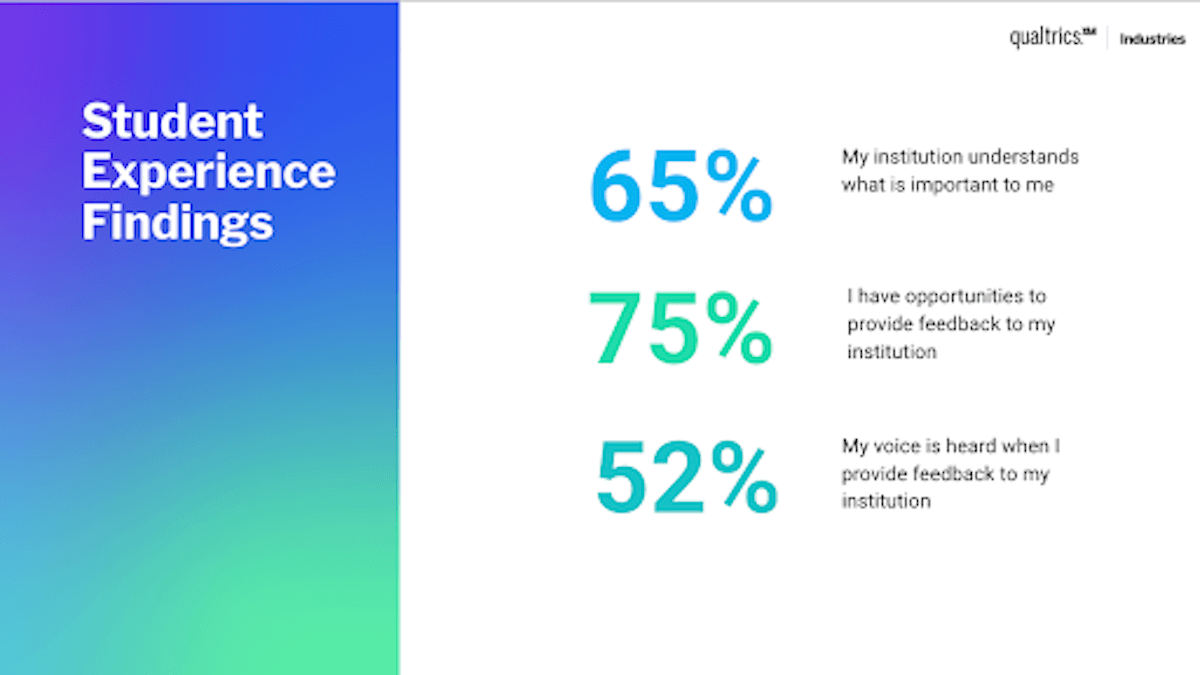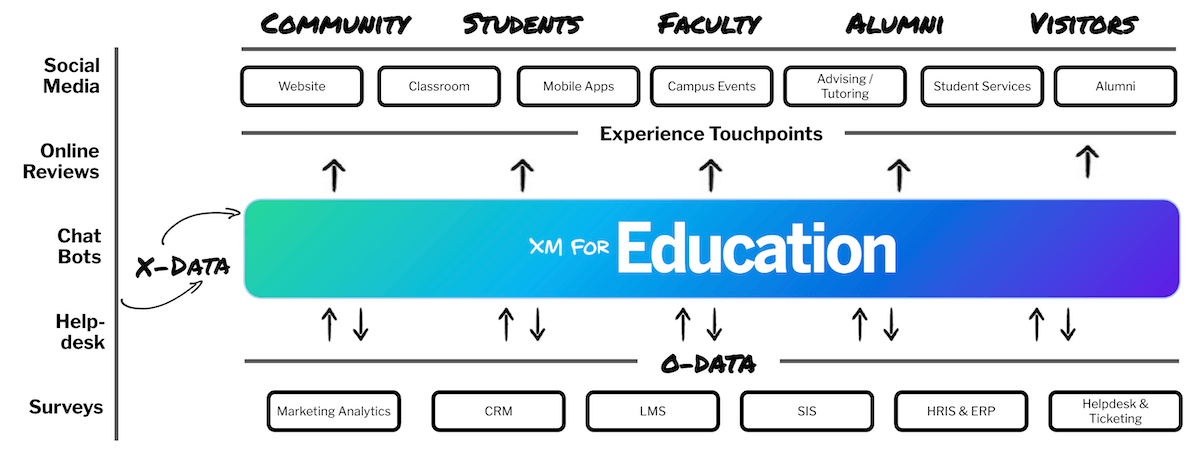Each day students enter a classroom or log in to a remote learning environment all over the world looking for something from their education experience. They have been told that pursuing education will broaden their horizons and open the door to what the rest of their lives will be dedicated to.
Now of course that view may be tinted with rose-colored glasses, but there’s no doubt that learning has traditionally brought a perceived value and perspective that alters life trajectory and serves as a launchpad for the next generation. Even further, experiences in education can add up to the best years of life, as engaged students flock to the quad or tailgate with their peers to participate in the legacy and history of their future alma mater.
There’s no doubt it is a beautiful image, but the question for school leaders is: Does reality fit the narrative? Are students getting what they want out of education?
What is student engagement?
Student engagement is the reciprocal relationship that schools and students are responsible for. Quite simply, it is the time and energy students invest in school related activities and the effort schools dedicate to connecting with individual students through curricular and co-curricular programming. Engagement is not synonymous with involvement, but encompasses multiple variables including involvement. For example, a student can be engaged even if they don’t attend activities.
Each student wants to feel like their education experience is personal, and catered to meet their needs. Ultimately research has shown that a sense of belonging, student growth, academic challenge, and school activities are important factors of student engagement. School leaders must focus on increasing student involvement, student achievement and on bridging the achievement gap in order to improve student engagement.
Strategies for improving student engagement
Start with why
This concept isn’t just a must-read book by Simon Sinek, it’s also the first step in engaging students in their education journey. School practitioners and educators know this, but not all students are alike and their individual journey is just as unique, personal, and nuanced. As a result, understanding student engagement goes beyond measuring general academic outcomes.
Historically schools measure student engagement based on the activities, events, support, and other infrastructure utilisation that might be better defined as “school engagement”. Schools default to defining student success based on metrics that populate rankings or are tied to the school’s initiatives. Academic success and student engagement are bound together at times because of each school’s inability to actually track true student engagement. With this mentality, institutions are defining student engagement and what it means to be engaged students through a lens of transactional or behavioural engagement.
What if the approach was different? What if schools establish methods for analysing student engagement include sense of belonging, satisfaction, emotional well-being and other factors? Developing a new perspective about how to measure student engagement, inside and outside the classroom can be the special sauce in understand true student engagement.
Digging into the “why” will require students to think about more than just test scores, or how they interact with other students. To start, student engagement starts by listening to students and meeting them where they are. Using that data, you can then start to unpack the student’s decision-making process and uncover more about what motivates them. Finally, those insights can help you take action leading to more engaged students and higher academic outcomes.
Flexibility is critical, as we know students are evolving. Their “why” will likely change over the course of the institutional relationship and possibly multiple times as life happens. Schools need to provide students with the opportunity to personalise their journey and customise a path that incorporates the outcomes that matter most to them. Where possible, schools need to provide a two-way dialogue to vest students in their relationship with campus and support their academic achievement and academic goals.
Act on student feedback
Two national surveys on student engagement, from the National Survey of Student Engagement (NSSE) and Community College Survey of Student Engagement (CCSSE), detail how students learn more when they are actively involved in their education. Thus the historical method of dictating a student course of study won’t improve engagement, in fact it could devest an engaged student from their own, meaning leaders need a strategy that works to involve students’ input in their education path.To highlight the importance of listening, Qualtrics engaged more than a thousand current college and university students and only 55% of those surveyed agreed that college was worth the cost. Compare that to the fact that 87% of college and university administrators polled in the same research studies, believe students are satisfied with their academic experience. The obvious gap in understanding the value is one thing, but more troubling was the resounding 35% of students who don’t feel that the schools they are currently enrolled at understand what is important to them.

While value proposition and academic experience shape a certain disconnection, the most glaring impact of this study found that nearly 50% of students surveyed don’t believe that their voice is heard when they provide feedback to their institution. Meaning the effort, and effectiveness of programming to capture the student voice, doesn’t actually get to the foundational element for pursuing the student voice, trust.
To build a trusting relationship, institutions must build authentic dialogue with their students and to invest each student in their individual journey. This supports the need for personalisation and reinforces the narrative that schools can no longer expect that students will consume “study plans” built for masses. It is not that students are self-centred, but more than ever they are self-aware of what matters to them.
Increase student engagement with personalisation
So where to start? Rather than boiling the ocean, it is important to carve out a space to land the concept of personalisation, authentic feedback and dialogue. Does this mean schools should halt plans, and instead wait for students to define the activities and events they want? Not at all. Personalisation has to start somewhere, the most important element is to start.
The truth is, student engagement isn’t optional, it is necessary and provides the adhesive that keeps students engaged. Personalisation can be as simple as:
1. Identify the baseline data you are already collecting
Along with asking students “why” and identifying a mutual goal, capture all the interactions that they value by using existing systems to piece together the story. Operational data like grades, event attendance, student schedules and other demographic information can begin to shape a picture of where students are, and the things they are interested in.
2. Focus on where you can make the biggest impact
Along the student journey pick moments that are important to the institution, and evaluate them through listening or feedback mechanisms like surveys or pulses that gather sentiment along with satisfaction to start to establish experience benchmarks and gain a deeper understanding of individual student needs.
3. Make sure you’re always listening
Schools are good at asking for feedback when we want it from students; however, colleges and universities are notorious for a one-sided conversation. Closing at 5pm, not responding outside of working hours, or ineffective chatbots that are pre-programmed with insufficient FAQs. Finding a way to capture ad hoc interactions and information is critical to support the student journey.
How to measure student engagement
Combining this information from disparate systems can be complicated; however, Qualtrics XM platform provides institutions the ability to combine these critical student engagement points at scale. By taking the measures above, you will foster an environment where student engagement is captured from an operational (O-Data) view and an experience (X-Data) view, giving you a holistic view of the student journey and building a robust profile for each individual student.
This allows you to support students and create a 360-degree profile for each. From the things they tell you directly, to signals in unstructured data like social media posts, reviews, conversations and much more, to capture a holistic picture of their unique student experience while seamlessly integrating with your existing systems.

Qualtrics allows you to create segment views built from individual student data to more effectively support and resource students in real-time. This means you can create segments based on actual student experiences, rather than just demographic indicators. Instantly see friction points along the customer journey at both an individual and cohort level, and know exactly where to step in and improve the experience.
Establishing authentic feedback and experience loop, to engage students, personalise their journey, and put schools one step closer to improving student engagement. By personalising engagement, schools will get richer data that will help inform decisions and drive outcomes.
Ready to see experience management for education in action?